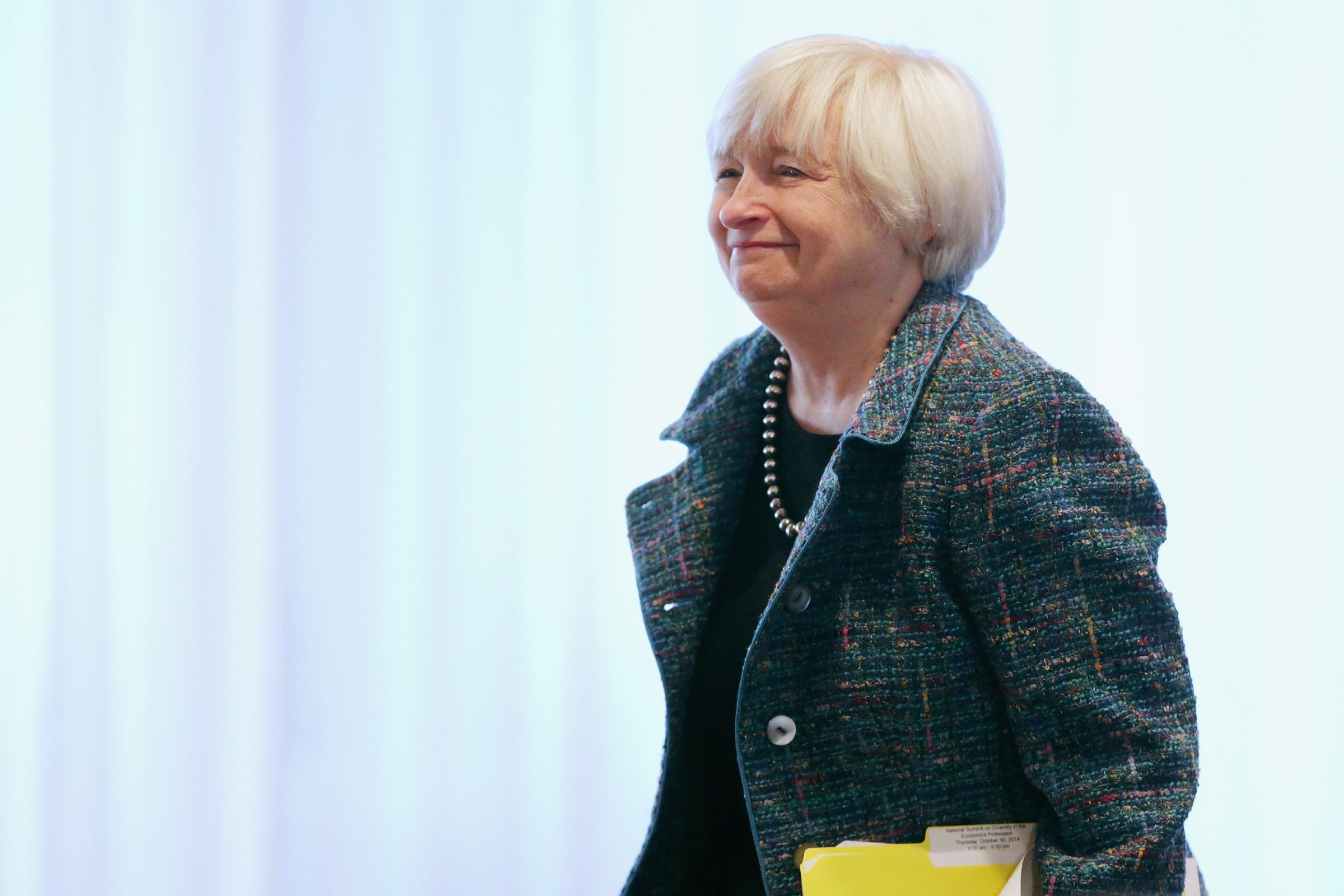
If you could write one headline to encompass the past six years of economic history, it would probably be “U.S. Leadership Is Over.” The financial crisis, the Great Recession and the tepid recovery that followed seemed to mark a permanent decline in American market hegemony. But the past few months of economic data are calling all that into question: U.S. gross domestic product and jobs growth are the strongest they’ve been since the crisis. CEO surveys are predicting a new era of business spending. And the effect of the dramatic fall in oil prices since last summer will likely mean the equivalent of a $100 billion tax cut for U.S. consumers.
For an economy made up 70% of consumer spending, that could mean the beginning of that virtuous, job-creating consumption cycle that we’ve been awaiting since things went to hell in 2008. What’s more, with trouble in developing markets like Russia, India and Brazil as well as most of Europe, the U.S. is suddenly no longer the epicenter of market trouble but rather the best hope for global prosperity. The question everyone is asking now is, Can the U.S. lead the world again?—-economically, at least.
Times have changed since the U.S. last found itself in a similar position. Then, back in the late 1990s, when the Asian debt crisis had everyone predicting the end of a great run of global growth, the worst-case scenario never came to pass. Even as China and the other big Asian markets tanked, U.S. growth powered along at nearly 4%, helping the rest of the world maintain a respectable 2.5% average.
But now China represents four times as much of the world’s growth as it used to, having swapped places with Europe in terms of importance. The debt crisis and major economic slowdown happening in the world’s most populous nation are big reasons that oil prices have fallen—Chinese businesses and consumers are using much less energy these days. That creates a contagion effect in countries like Brazil, Nigeria and Russia and in parts of the Middle East, which have economies that are increasingly driven by China. No wonder experts like Morgan Stanley’s Ruchir Sharma are proclaiming that the next global recession will be “made in China.”
What does all that mean economically for the U.S.? While the fall in oil prices is great short-term news for middle- and low-income Americans—who are already buying more gas, cars and big-ticket appliances as a result—it also makes it tougher for American energy producers to pump out of the ground all that homemade shale oil and gas we’ve been hearing about for the past several years.
Unlike the Saudis, who can practically dig with a teaspoon and hit oil, we have to frack for it, and that’s expensive. Saudis need about $25 a barrel to make money on oil. We need at least $70, and most of the energy development and production happening in the U.S. now was set up at a time when prices were over $100. Currently they are hovering around $60, thanks not only to a sluggish China but also to the unwillingness of Saudi Arabia to cut production in order to boost prices (which may be part of a complex geopolitical strategy by the Saudis to put pressure on rival petro-autocrats in Iran, as well as Putin’s Russia).
All of this matters, and not just because energy is the de facto scoreboard for the global economy these days. If U.S. energy producers decide that they can’t afford to stay in the game with prices so low, that could hurt American manufacturers who were basing their expansion plans on cheap power. They might cut jobs, which cuts consumer spending, which cuts jobs … head-spinning, I know. The bottom line is that the evolution of the global economy over the past couple of decades blunts the ability of the U.S. to carry the rest of the world economically in the years ahead.
While it’s an amazing thing that the U.S. is likely to outgrow many emerging markets this year, the crucial question will be how robust the U.S. recovery will remain in the face of the global slowdown. At the risk of being a Cassandra, I’d feel better if I thought the U.S. recovery had been built on a firmer foundation, like a strong housing recovery or a real pickup in wages. Neither is the case. Rather, this recovery is genetically modified—it was engineered by the Fed’s $4 trillion money dump and interest rates that are still near zero. As they begin to rise—as they almost certainly will toward the middle to end of 2015—the monetary scientists in Washington will step back from the petri dish and see if the economy can sustain what they kick-started. Only then will we be able to gauge whether the U.S. has regained its position as the driver of the global economy.
More Must-Reads from TIME
- Donald Trump Is TIME's 2024 Person of the Year
- Why We Chose Trump as Person of the Year
- Is Intermittent Fasting Good or Bad for You?
- The 100 Must-Read Books of 2024
- The 20 Best Christmas TV Episodes
- Column: If Optimism Feels Ridiculous Now, Try Hope
- The Future of Climate Action Is Trade Policy
- Merle Bombardieri Is Helping People Make the Baby Decision
Contact us at letters@time.com